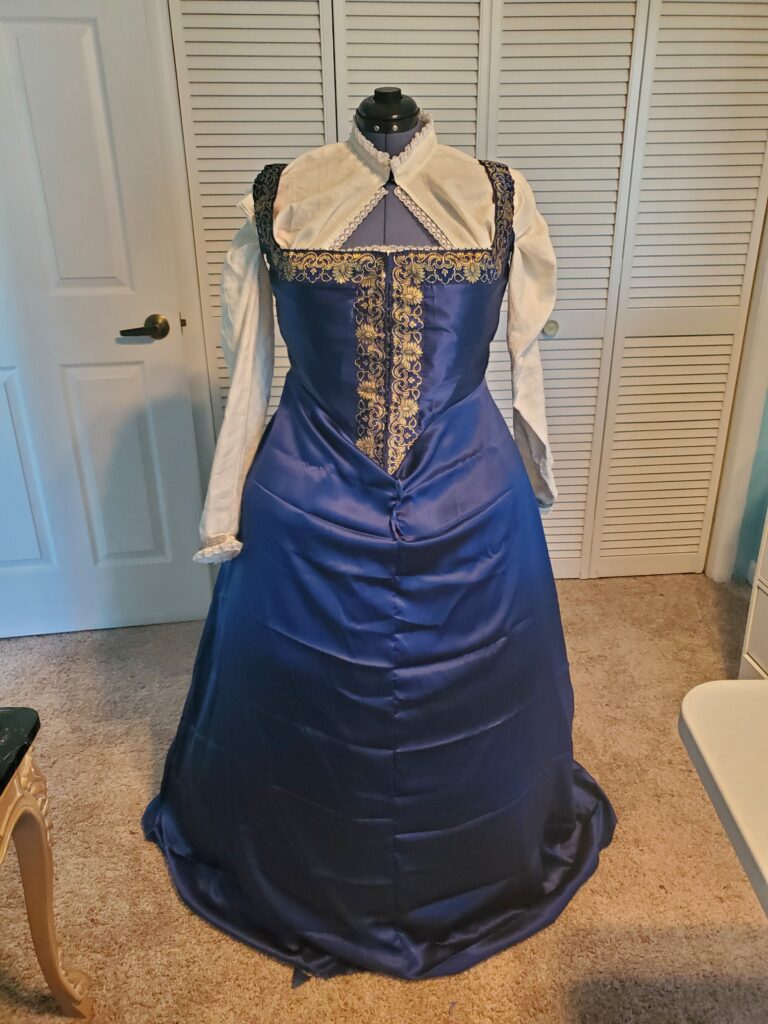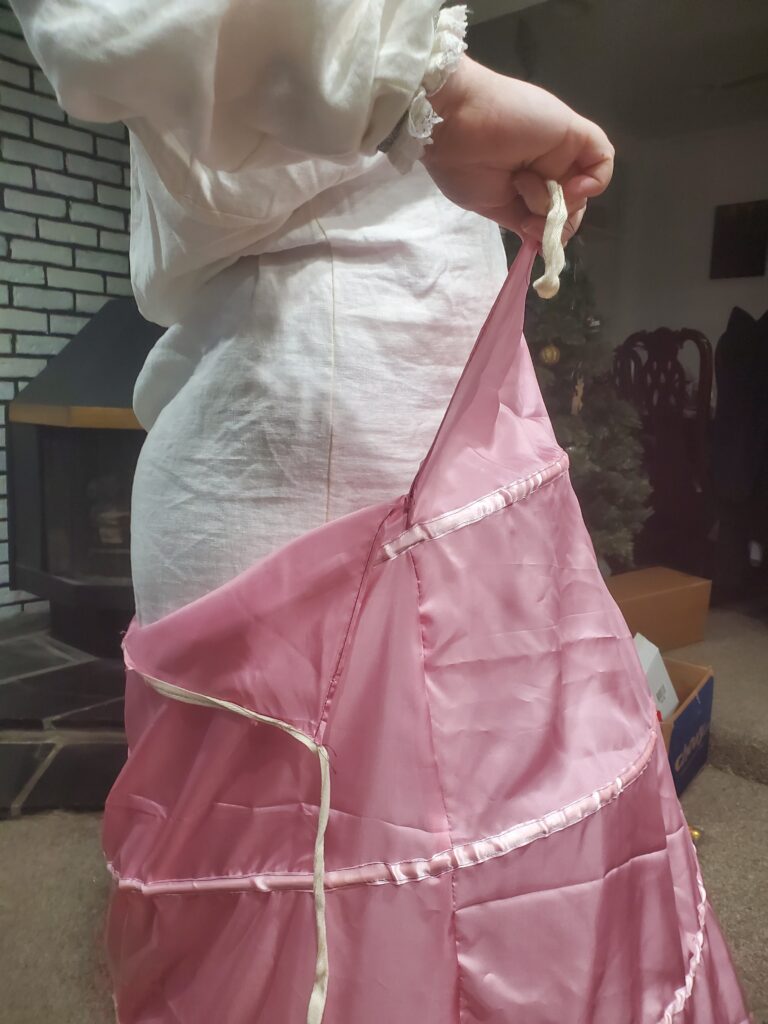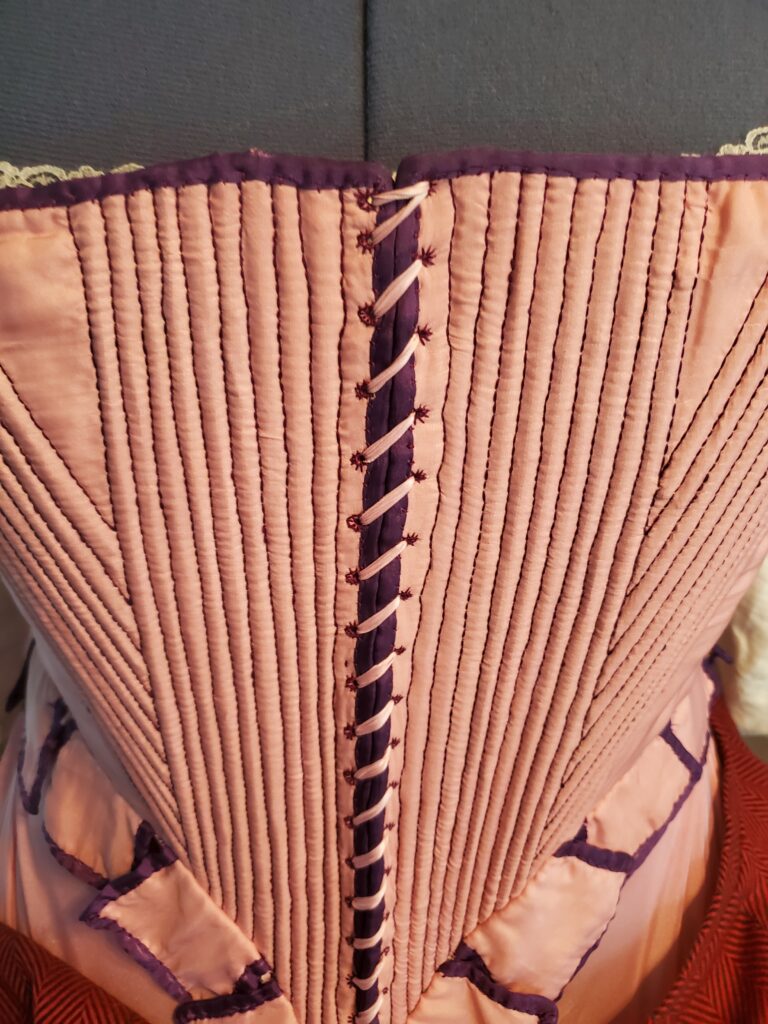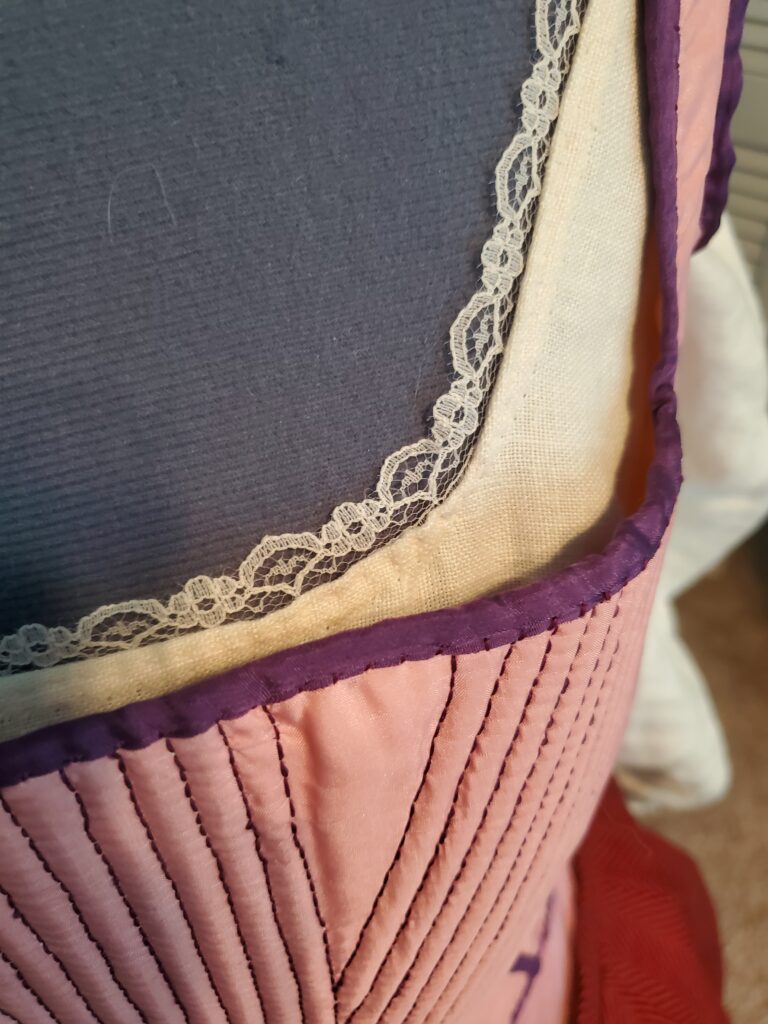I just wanted to take a quick minute and address some of the questions I’ve received on my posts so far:
Why did you choose to use a pair of bodies as the supportive layer?
Outside of this competition, my research area of focus is actually 16th century undergarments. I have been working my way through the warrants of Elizabeth’s wardrobe, and have found evidence as to the wearing of a pair of bodys as early as 1559.
We woll and commaunde you that ymediatlie uppon the sight hereof ye deliuer or cause to be delyuered unto oure trustie and welbeloued the Lady Cobham one of oure prive chamber, and to Walter Fyshe oure Tayler Sixe yardes of Crymesyn damaske golde reised with vellat to make a petticote for us. And seven yardes of Crimesyn satten wrought with golde to make bodies and to lyne the said petticote
Warrant for Douglas Haward one of our maids of Honor against her marriage, 1559
Also that ye delyuer unto John Roynon yeoman of our Robes and Walter Fishe our tayler six yardes of crymesen silke chamlet for to lyne a petticote for us of Crymesen taphata all ouer embroderied. And one yarde quarter di of purple satten wrought with golde to make a paire of bodies for us-
Warrant for a petticoat and for furring a gown, 1560
As for using them with this particular gown, I was referencing the entry from 1571.
A payre of bodies of black cloth of silver with little skirts
Queen Elizabeth’s Wardrobe Unlock’d, Janet Arnold
Can you show more details/talk more about the undergarments?
I will talk about undergarments all day, so this is the one that made me pull this into a separate post.
Smock
The smock is a square necked smock with blackwork cuffs and lace. Structural seams are done on machine, everything else is done by hand. Not too much to be said here, but I do have lots of pictures.
Farthingale
This piece is silk with wooden reed hoops. While the silhouette of the farthingale is correct, and the hoop profile is based on the extant piece in Janet Arnold’s Patterns of Fashion 5, I did actually do something different with the waistband. At the time that I made this, I was in the process of losing a large amount of weight. I decided to switch out the period waistband with a two-paneled design from several 18th century petticoats. Once my weight stabilizes, I intend to fix it. You will also notice that some of the pictures have a different color for the ribs. After these pictures were taken, I noticed that the hoops tended to break when I sat, so I replaced them with heavier reed.
Bum Roll
Typically, at this point I would add a bum roll, to add padding to the back of the skirt. Personally, my bum is already pretty padded, so I typically skip it.
Pair of Bodys
This item might just be one of my absolute favorite pieces of garb. It is based off the pattern in Modern Maker 2. This pair of bodys is silk inside and out, with 2 layers of linen canvas inside. It is boned with bents, and edged and laced with silk ribbon. The channels are hand stitched with silk thread.
Petticoat
Red wool, very common for petticoats in the period. This is actually cut from the same pattern as the farthingale, and gathered onto a reinforced waistband. (A bonus to the heavier reed in the farthingale, you cant see it through the petticoat anymore!)
How many layers are in the blue satin bodice?
Ok, so I was really bad about taking progress pics on this one. Good news though! the overdress is constructed with exactly the same method, until I add the sleeves. So you will definitely get to see the entire process before the competition in over. In the meantime, Here is a brief description of the method.
The bodice is 3 layers- fashion fabric, a core of linen canvas, and lining. The linen canvas is cut to size (no seam allowance) and “wrapped” in fashion fabric and basted. The lining is then prick stitched to cover the seam allowances. The four body panels are whip stitched together.
I hope this helps clarify if anyone else was hoping for more detail. I know this was a long post, but for those of you who followed me all the way to the end- here is a sneak peek of the kirtle. I’ll be posting the full write up on this tomorrow, but it’s finished!




























Thank you for the extra information!
I appreciate your response regarding bodies. This leads me to a new question–how do you distinguish between bodies as separate garments, bodies attached to petticoats, and petticoats without bodies? The nomenclature used in wills, warrants, and wardrobe accounts can be confusing and has led to debates regarding usage.
In the case of the 1971 set, they were listed as bodies with a “small skirt” which I interpreted to mean hip tabs. In other pages of the document there were references written by the same scribe to garments he
specifically called petticoat bodies